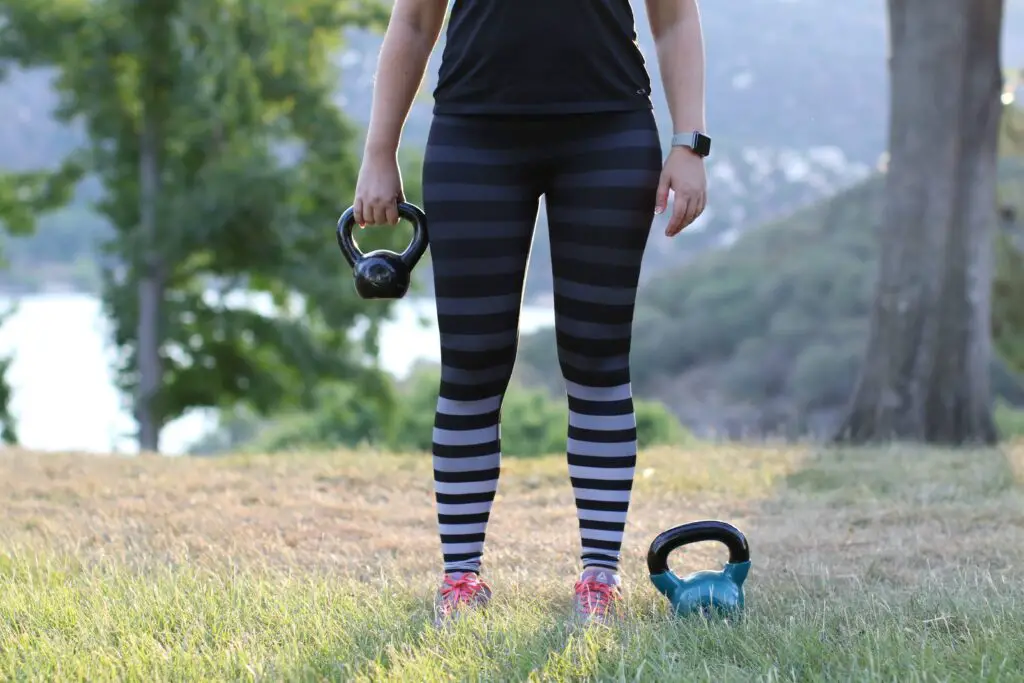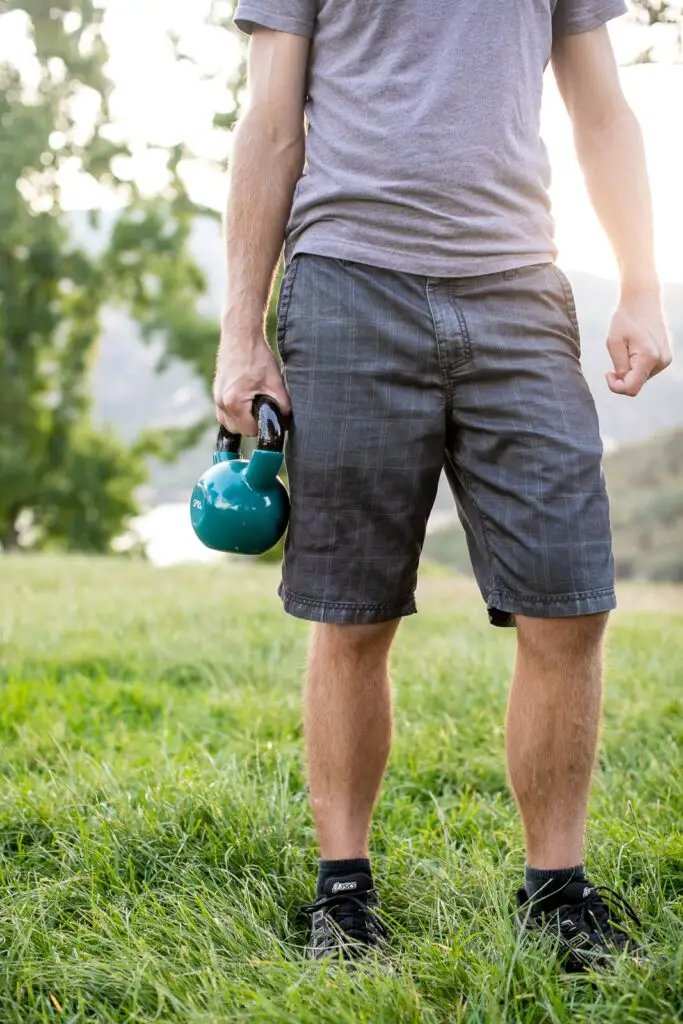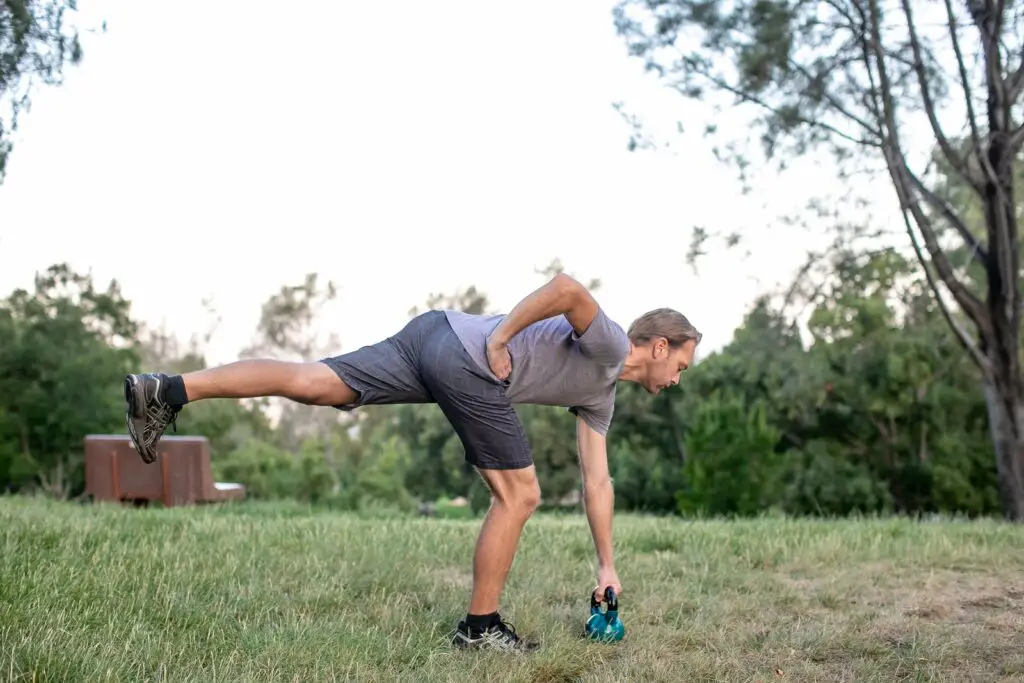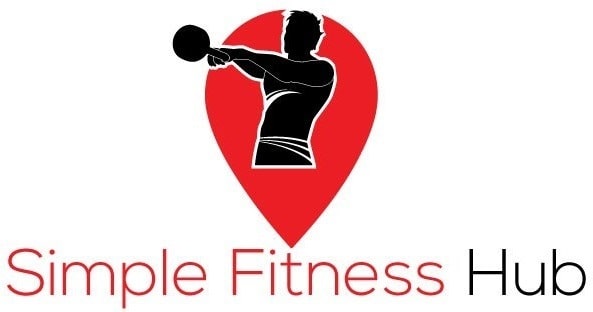Kettlebells can very well be the first of your home gym equipment. While they can be expensive when you buy them, there are alternatives you can do to make a kettlebell of your own. In this article, we’ll teach you the different ways on how to make homemade kettlebells.
How to Make Homemade Kettlebells
There are plenty of ways you can make homemade kettlebells. Some of them don’t even take up 2 minutes to make. DIY kettlebells are also cheap to make so you won’t have to spend too much and you can even use some of the materials available at home.

Making a Kettlebell Using a Basketball
If you have a deflated unused basketball at home, you can use it to make your own homemade kettlebell. Making a kettlebell using basketball may take a bit of time and some materials.
Materials
- Cement
- Basketball
- 26 inch of ¾ inch or 1 inch PVC (sch40)
- Sand
- Duct tape
- Water
Tools
- Hacksaw or jigsaw
- Heat gun or oven
- Bucket
- Small garden spade
- Pair of scissors
Making the Handle
- We’ll use the PVC pipe to make the handle. Use the hacksaw to cut the PVC to a length you’ll be comfortable to hold as a handle. Most people cut their PVC into 24 – 28 inches in length.
- Use the duct tape to cover one end of the PVC.
- Fill the PVC with sand. The sand will help keep the PVC retain its roundness once it’s being heated up.
- Seal it using a duct tape once it’s full.
- Heat up the PVC using a heat gun until you can form it into a handle. Another alternative is to wrap it with tin-foil, place it in a baking sheet, and heat it for 350 F for about 10 minutes.
- Bent the PVC so it’s shaped like the handle of a kettlebell. Use some protective gloves to protect yourself from the heat.
- Let it cool down or dip it in water to speed up the cooling process.

Making the Kettlebell
- Cut the basketball open in a manner where the handle can fit halfway inside. You can do this by cutting a slit that will make part of the handle fit inside. Test the cut by inserting the handle.
- Once the slit is done, cut two circles at both ends of the slit. This is where the ends of the PVC will go through. It will also make pouring the cement inside easier.
- It’s time to fill the ball with weights. Mix the cement with a bit of water and mix. Add more water until the concrete mixture becomes a thick paste.
- Using a garden spade, fill the ball with the concrete mixture. Once the ball is almost filled, insert the handle at a depth that you will be comfortable to hold at.
- Slightly tap the basketball once in a while to let the concrete settle at the bottom. Also, double-check if the handle depth is at your comfort level.
- After checking everything, wipe excess concrete with a damp cloth and let your homemade kettlebell dry for 24 hours.
- After 24 hours, do some finishing touches like spray paint or thorough cleaning and you can now use your homemade kettlebell.
Advantages of Using Basketball with Cement as Kettlebell
- You get heavier weight kettlebell if you want to build up muscle strength and endurance
- They will be great for long term use
- The handle is exactly that of a kettlebell
Making a Kettlebell Using a Milk Jug
The milk jug is probably the most convenient thing you can make as a kettlebell. This is a fairly simple and easy process to do. Making a homemade kettlebell using a milk jug will only take up 2 to 3 minutes.
Materials
- Spare empty milk jug
- Sand
Instructions
- Fill the empty milk jug with sand or water to add weight to it. Using sand is better because you might accidentally drop the homemade kettlebell and probably make less of a mess if you use water.
- Seal tight the lid and you have your very own milk jug kettlebell.
Advantages of Using Milk Jug Kettlebell
- It’s great for beginners as the weight of a milk jug is light compared to other homemade kettlebell alternatives.
- It doesn’t cost money at all to make as long as you have a spare milk jug at home.
- It can also act as a dumbbell and you can easily make two of them.
- If you use water as weight, it will add to the level of difficulty as the water shifts the center of gravity as it moves inside.
- It’s a convenient option especially if you are traveling and don’t want to spend money at the gym to exercise.

Making a Kettlebell Using Dumbbells
If you have dumbbells at home then it’s quite easy to turn it into a kettlebell. Although they’re both the same in terms of weights, their exercises produce different benefits to your body.
Materials
- Dumbbell
- Rope (at least 3 feet in length for tying)
Instructions
- Look for a dumbbell that is appropriate for the weight you want your kettlebell to be.
- Using the rope, tie it around each end of the dumbbell handle.
- The length after tying should be enough for you to hold and a bit of clearance. You don’t want it too long or it will cause some accidents.
Advantages of Using Dumbbell Kettlebells
You don’t have to spend on anything. Additionally, you don’t have to buy a kettlebell as your dumbbell can work both as a dumbbell and a kettlebell.
However, be careful when you use it. The rope is flexible compared to the rigid handle of a kettlebell so it might cause some accidents. Personally, it’s great for light forms of kettlebell workouts because if you’re not careful and the rope loosens then you might have a destroyed appliance at home.
If you’re just looking to combine kettlebell and dumbbell workouts, then this is a great option.
Conclusion
These are some of the most optimal options you can do to make a homemade kettlebell. Some of the options above won’t even cost you money. While some are great ways to learn a thing or two about making things using tools. Remember to prioritize safety when making your own homemade kettlebell.
